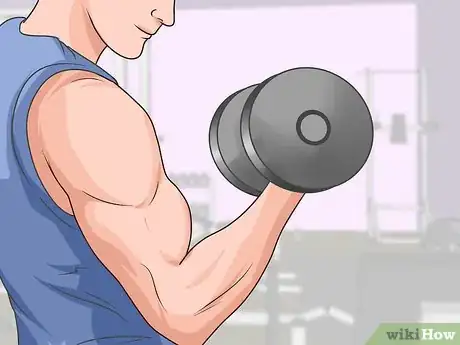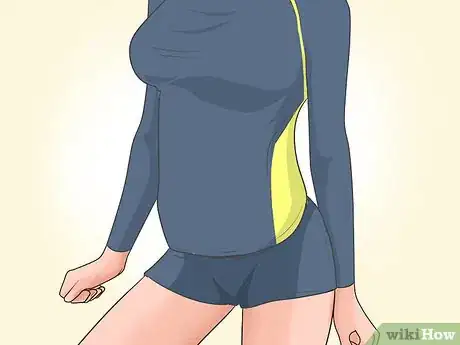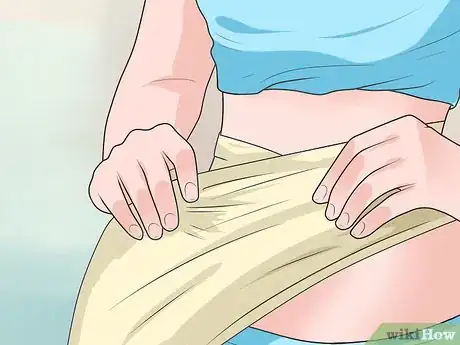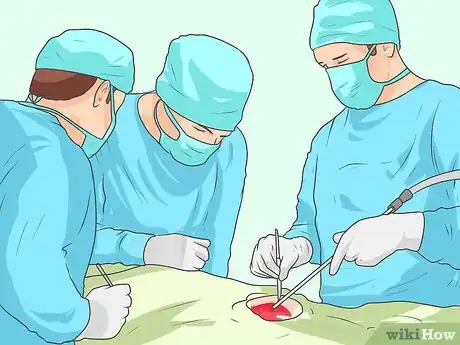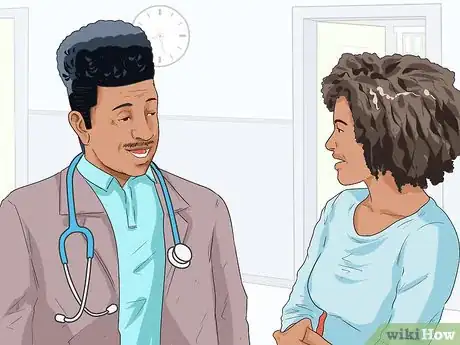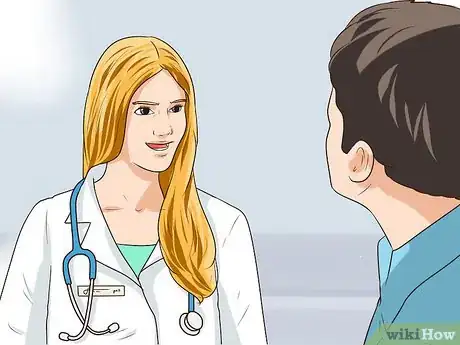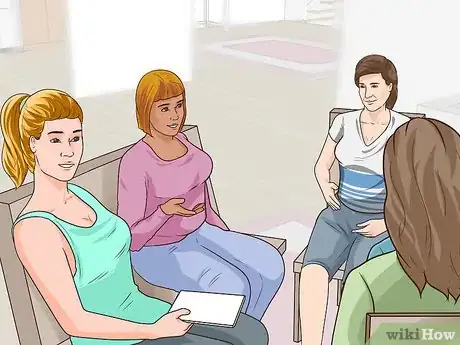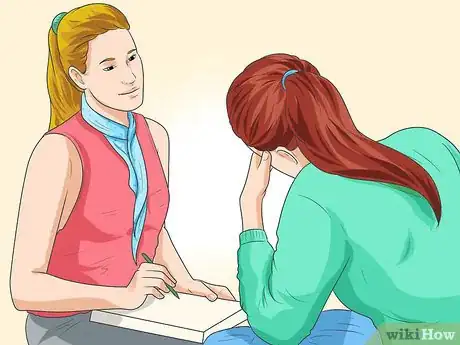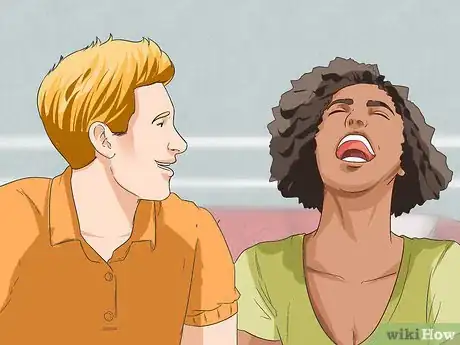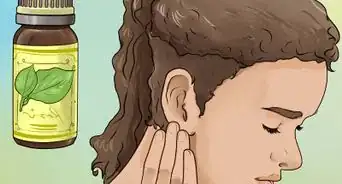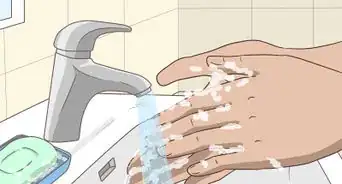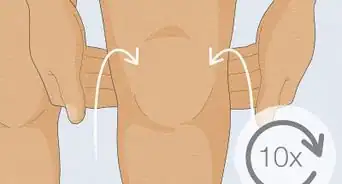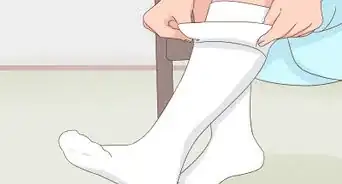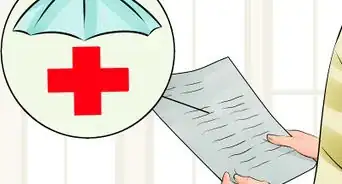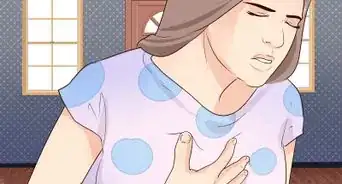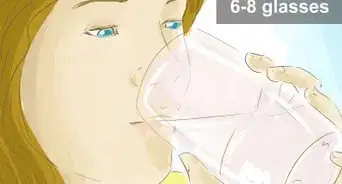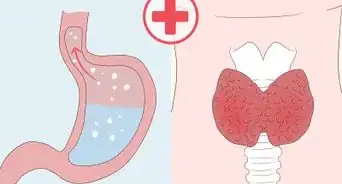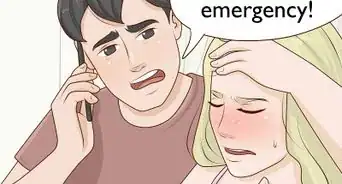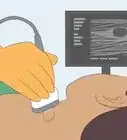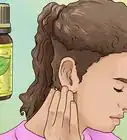This article was medically reviewed by Jennifer Boidy, RN. Jennifer Boidy is a Registered Nurse in Maryland. She received her Associate of Science in Nursing from Carroll Community College in 2012.
There are 11 references cited in this article, which can be found at the bottom of the page.
This article has been viewed 53,050 times.
Lipedema is a fat disorder in which the body accumulates excess fat under the skin in the lower body, primarily affecting the hips, buttocks, and legs. This painful condition occurs mainly in women, with an incidence of approximately 11% of all women. It can also occur in men, but is rare.[1] If you have been diagnosed with lipedema, you should discuss treatment options with your doctor to determine what will best suit your case. Lipedema can be a painful, embarrassing, and potentially debilitating condition for many of the women who suffer with it. While there is no cure, early diagnosis and treatment can decrease pain and discomfort and significantly reduce debilitation.You should not forget that it is important to find a way to cope with the difficult emotions you might be dealing with as well.
Steps
Treating Lipedema Directly
-
1Maintain a healthy diet and exercise regularly. Though eating healthy and exercising won’t cure the problem, it will help get rid of any fat that is not caused by the disorder.[2]
- Maintaining a healthy diet and exercising may also help reduce inflammation.
- It is important to understand that this disorder is not a result of being obese, and though you may be doing everything right in terms of diet and exercise, you won’t be able to cure the disorder through diet and exercise.[3]
-
2Use compression wear. This is a fairly straightforward treatment which involves wearing a garment designed to compress the affected area for several hours each day. You will need to discuss what garment is appropriate for your needs with a doctor or therapist.[4]
- It is believed that wearing compression garments encourages blood flow while also providing support. Additionally, the compression encourages the fluid to move out of the area and drain properly. [5]
- If you are experiencing pain because of your lipedema, this treatment option may not be a good option for you.
Advertisement -
3Try Manual Lymphatic Drainage (MLD). MLD is a type of gentle massage that is meant to encourage the flow of the lymphatic fluids in the body. Usually, the massage will be given by a trained professional, and combined with another type of therapy, such as compression therapy.[6]
- This treatment may also be effective in reducing pain.
-
4Consider Complete Decongestive Therapy (CDT). This type of therapy involves combining several non-surgical techniques including use of compression wear, manual lymphatic drainage, exercises meant to help remove lymph from the swollen areas, and skin care to help prevent infections.[7]
- This type of treatment usually involves two phases. The first phase is an active phase which involves two to 12 weeks of one-hour treatment sessions. These sessions are usually limited to four or five days each week. The second phase is called the maintenance phase and involves giving self-massage to the affected areas, completing exercises, and wearing compression wear or bandages day and night.
-
5Learn about liposuction. In some severe cases, and if other treatment methods have not helped, you doctor may suggest liposuction as a way to treat the disorder. This is a surgical method, and thus comes with all of the risks.[8]
- There are three varieties of liposuction: the dry technique, Water Assisted Liposuction (WAL), and Tumescent Liposuction (TLA). You should discuss which method is right for you.
- Generally, liposuction for lipedema patients is more commonly used in European countries than in the USA. Thus, if you live in the US, it may be a bit more challenging to find a surgeon experienced in this method of treatment.
-
6Ask your doctor about pain management. Unfortunately for many, lipedema is not only disfiguring, it is also painful. The fat on the legs, hips, and buttocks is painful, sensitive to the touch, and bruises quite easily. This can make living a normal life difficult, and only contributes further to the emotional effects of the disorder. If you experience pain with your lipedema, be sure that your doctor knows this. Ask the doctor how you can manage the pain. Some doctors may prescribe pain medications, while others may refer you to a specialist who can teach you various pain management techniques.
- Many of the therapies discussed in this article (such as MLD and CDT) work not only to help reduce the swelling but also to reduce pain as much as possible.[9]
- Being overweight (in addition to lipedema) can contribute further to the pain caused by lipedema. This is why it is especially important to maintain a healthy lifestyle. Many lipedema patients report that swimming offers an excellent way to exercise because it is very low-impact and does not exacerbate the pain.[10]
- Other exercises that may offer a good way to reduce stress and improve blood flow include: yoga, pilates, walking, stretching, and bouncing on a trampoline. Try out these exercises to see which (if any) are painful, and which you enjoy most.
Maintaining Your Health
-
1Continue to maintain a healthy lifestyle. Some people may feel discouraged when receiving a diagnosis of lipedema. For many people, the extra fat may make it feel as though there is little point in trying to maintain a healthy lifestyle; however, this couldn’t be any further from the truth. Being diagnosed with lipedema means it is more important than ever that you learn to manage the disorder while eating right and exercising on a regular basis.[11]
- Ask your doctor about an exercise regimen that will suit your needs. Be sure to point out any exercises that are made painful because of your condition.
-
2Get regular checkups. Patients with lipedema often experience other health problems after they are diagnosed with lipedema. Obesity, mental disorders, and problems related the veins are just a few of these possibilities. This means it is extremely important to see your doctor regularly; not only to monitor the lipedema but to monitor your health in general.
- In some cases, lipedema can advance into a different, but similar disorder known as lymphedema, which may require different treatment methods. [12]
-
3Take care of any conditions that might exacerbate the disorder. There are certain health conditions that can make lipedema symptoms worse. For example, thyroid issues, vitamin deficiencies, and health conditions that cause inflammation all tend to worsen the symptoms of lipedema.
- Make sure that your doctor is aware of all medications you are taking, including any herbal supplements or vitamins. If your doctor prescribes any medication, make sure that you take your medication as instructed.
Dealing with the Emotional Effects of Lipedema
-
1Join a social support group. Being diagnosed with lipedema can be a shock, and dealing with the physical symptoms of the disorder leaves many people feeling very self-conscious. Finding a support group that helps you realize you are not alone is a great way to help cope with the psychological effects of this disorder.[13]
- There are many blogs, forums, and other social media groups aimed at creating a positive, supportive community for people suffering from lipedema. The lipedema project is an organization aimed at helping people find a supportive place to learn about and talk about their lipedema.[14]
-
2Consider therapy. For many people, being diagnosed with lipedema is very difficult to deal with. You might have a good social support system in place already, but having an objective person that has an outside perspective can be a great way to talk about your feelings in a safe environment.
- Additionally, a trained mental health professional will be able to help you strengthen your coping skills, and give you new ways to think about your diagnosis. This is in addition to listening to your worries about the disorder, which is very helpful for many people.
-
3Surround yourself with supportive people. When you are diagnosed with lipedema you may start to realize that there are people in your life who don’t have your best interest at heart. Right after diagnosis, you may be very vulnerable to the opinions of others, and it won’t do you any good to sit around listening to negativity. Instead, surround yourself with the people who make you feel better.
- This doesn’t mean you have to cut off contact with everyone who isn’t always a shining beacon of positivity. Instead, try to distance yourself from those people while you are learning to cope with your diagnosis.
-
4Understand that lipedema is not the result of lifestyle changes. Many people diagnosed with the disorder may feel as though the disease is a result of eating too much junk food or not getting enough exercise. It is important to remember that this is not the case. Though the cause of the disease is not 100% clear, doctors believe that it is likely related to hormonal changes (e.g. when puberty begins or during pregnancy) and that it is a genetic disorder that is passed down.[15]
- Thus, while you should do your best to maintain a healthy lifestyle, you should accept that no amount of dieting and exercise will cure the problem. Getting enough exercise and making healthy food choices will, however, help you maintain your health as best you can.
- Given this information, it is also important to remember that the disorder is not your fault and that you shouldn’t beat yourself up about the disorder.
Warnings
- Try to remember that a diagnosis of lipedema is not an indication that you have been living an unhealthy lifestyle, nor does it mean that you are obese.⧼thumbs_response⧽
References
- ↑ http://www.webmd.com/women/guide/lipedema-symptoms-treatment-causes
- ↑ https://www.lipedema.org/treating-lipedema
- ↑ https://www.lipedema.org/patients
- ↑ http://www.lipoedema.co.uk/about-lipoedema/treatment/
- ↑ https://health.clevelandclinic.org/ladies-heres-what-you-should-know-about-lipedema-a-condition-that-causes-excess-fat-in-the-legs/
- ↑ http://www.lipoedema.co.uk/about-lipoedema/treatment/
- ↑ https://www.oncolink.org/support/side-effects/lymphedema/lymphedema-what-you-need-to-know/treatment-for-lymphedema-complete-decongestive-therapy-cdt
- ↑ https://health.clevelandclinic.org/ladies-heres-what-you-should-know-about-lipedema-a-condition-that-causes-excess-fat-in-the-legs/
- ↑ http://lipedemaproject.org/treatment-for-lipedema/
- ↑ https://lipedemaproject.org/treatment-for-lipedema/
- ↑ https://www.lipedema.org/treating-lipedema
- ↑ https://stanfordhealthcare.org/medical-conditions/blood-heart-circulation/lipedema/stages.html
- ↑ https://lipedemaproject.org/treatment-for-lipedema/
- ↑ http://lipedemaproject.org/social-resources/
- ↑ http://www.nhs.uk/conditions/lipoedema/Pages/Introduction.aspx
